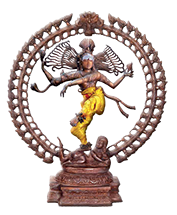எழுவகைப்பிறப்பும் நால்வகைத் தோற்றங்களும்..
****எழுவகைப் பிறப்புக்களாவன யாவை?
தேவர், மனிதர், விலங்கு, பறவை, ஊர்வன, நீர் வாழ்வன, தாவரம் என்பவைகளாகும்.
இவ்வெழுவகையினுள்ளும், முன் நின்ற ஆறும் இயங்கியற் பொருள்கள்; இறுதியில் நின்ற தாவரங்கள் நிலையியற் பொருள்கள். இயங்கியற் பொருளின் பெயர் சங்கமம், சரம். நிலையியற் பொருளின் பெயர் தாவரம், அசரம்.
விளக்கக் குறிப்பு:
இயங்கியற் பொருள் என்றால் அசையும் பொருள்கள், உயிரினங்கள். நிலையியற் பொருள்கள் என்றால் அசையாத, ஓரிடத்திலேயே நிலைத்து இருக்கின்ற பொருள்கள், உயிரினங்கள்.
• எழுபிறப்பும் தீயவை தீண்டா பழிபிறங்காப்
பண்புடை மக்கட் பெறின்
– திருக்குறள் 62
• புல்லாகிப் பூடாய்ப் புழுவாய் மரமாகிப்
பல்விருக மாகிப் பறவையாய்ப் பாம்பாகிக்
கல்லாய் மனிதராய்ப் பேயாய்க் கணங்களாய்
வல்லசுர ராகி முனிவராய்த் தேவராய்ச்
செல்லாஅ நின்றஇத் தாவர சங்கமத்துள்
எல்லாப் பிறப்பும் பிறந்திளைத்தேன் எம்பெருமான்
– 8ம் திருமுறை, திருவாசகம்.
***** நால்வகைத் தோற்றங்களாவன யாவை?
அண்டசம், சுவேதசம், உற்பிச்சம், சராயுசம் என்பவைகளாம்.
அண்டசம் = முட்டையிற் தோன்றுவன.
சுவேதசம் = வேர்வையிற் தோன்றுவன.
உற்பிச்சம் – வித்து, வேர், கிழங்கு முதலியவைகளை மேற் பிளந்து தோன்றுவன.
சராயுசம் = கருப்பையிற் தோன்றுவன.
விளக்கக் குறிப்பு:
அண்டம் என்றால் முட்டை.
குக்குடாண்டம் = கோழி முட்டை,
மயூராண்டம் = மயில் முட்டை.
அண்டத்தொகுதிகள் கோள வடிவில் இருப்பதை அன்றே அறிந்திருந்த எமது சமயத்தில் அதன் உருண்டையான கோள வடிவம் காரணமாகவே அண்டம் என்றும் கோள் என்றும் பெயரிட்டனர்.
• அண்டப் பகுதியின் உண்டைப் பிறக்கம்
– 8ம் திருமுறை, திருவாசகம்
சுவேதசம் என்றால் அழுக்கு. வியர்வை முதலான அழுக்கில் தோன்றும் கிருமிகளையும், பீடைகளையும் குறிப்பது சுவேதசம் என்று கூறுவர். ஆயினும், சுவேதசம் என்றால் சுயமாக பதிய அல்லது பிளவு முறையில் தோன்றுவது என்றும் பொருள் கொள்ளலாம். பற்றீரியா, மதுவம் போன்ற நுண்ணுயிர்கள், கிருமிகள், தண்டில் இருந்து பதிய முறையில் முளைக்கும் தாவரங்கள் இதற்கு உதாரணங்கள்.
“எழுகடல் மணலை அளவிடி னதிக
மெனதிடர் பிறவி அவதாரம்………….”
ஏழு கடல்களின் கரையிலுள்ள
மணலையெல்லாம், எண்ணிப்பார்த்தால் வரும் அளவை விட அதிகம், என் துன்பம் நிறை பிறவிகள் என்ற அவதாரங்கள்.
– அருணகிரிநாதர் அருளிய திருப்புகழ்.
Book Reference –
ஆறுமுக நாவலர் சைவவினாவிடையும்
Dr. Lambotharan Ramanathan (MD) அவர்களின் விளக்கக்குறிப்புகளும் (நூல்).
Birth and four types of looks..****What are the births of wake up?Thevar, human, animal, bird, reptiles, water life, plant.In this world, the river operational materials that stood in front; the plants that stood at the end are stable materials. The name of operational material is Sangam, string. The name of the stable material is plant, Asaram.Description note:Operational substances means moving substances, creatures. Stable materials means things and creatures that exist in one place.• Revenge if you touch the evil that arisesManicure makat getin– Thirukural 62• Bullakip Boodaip Become a Worm TreeMultipurpose Magib Bird SnakeStone man as demon momentsVallasura Ragi Munivarayth DevraichIn the plant association where Chellah stoodAll births were born Emperuman– 8th Thiruvasagam, Thiruvasagam.***** What are the four types of looks?Love, Swedasam, Production, Sarayusam are all.Fancy = egg appears.Gospel = Sweat appears.Production – Seed, root, potato etc. will be split over.Sarayism = Ovarian appears.Description note:Cosmos means egg.Cookutandum = chicken egg,Mayurandum = peacock egg.At our time, when we knew that cosmos were in sphere form, they were named cosmos and planet due to its round sphere form.• The hill birth of the cosmic area– 8th Thiruvasagam, ThiruvasagamSwedhism means dirty. He said that it is auspicious to mark the germs and alcohol that appear in sweat-first dirt. However, Swedhasam can also mean appearing in self-registered or split mode. Antibiotics like pateria, alcohol, germs, plants that grow from stem are examples for this.“Rise sea sand measurement riverThe birth incarnation of mentality…………. “On the shore of the seven seasThe sand is more than the measure of counting, the incarnations of my sorrowful births.– Return given by Arunagirinathar.Book Reference –Arumuga novel vegetarian quizDr. Lambotharan Ramanathan (MD)’s explanations (book).



